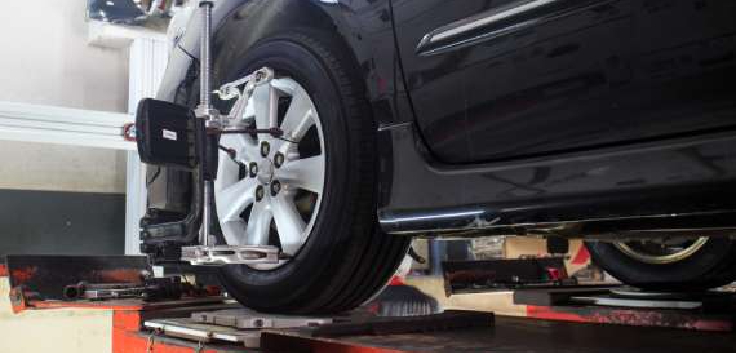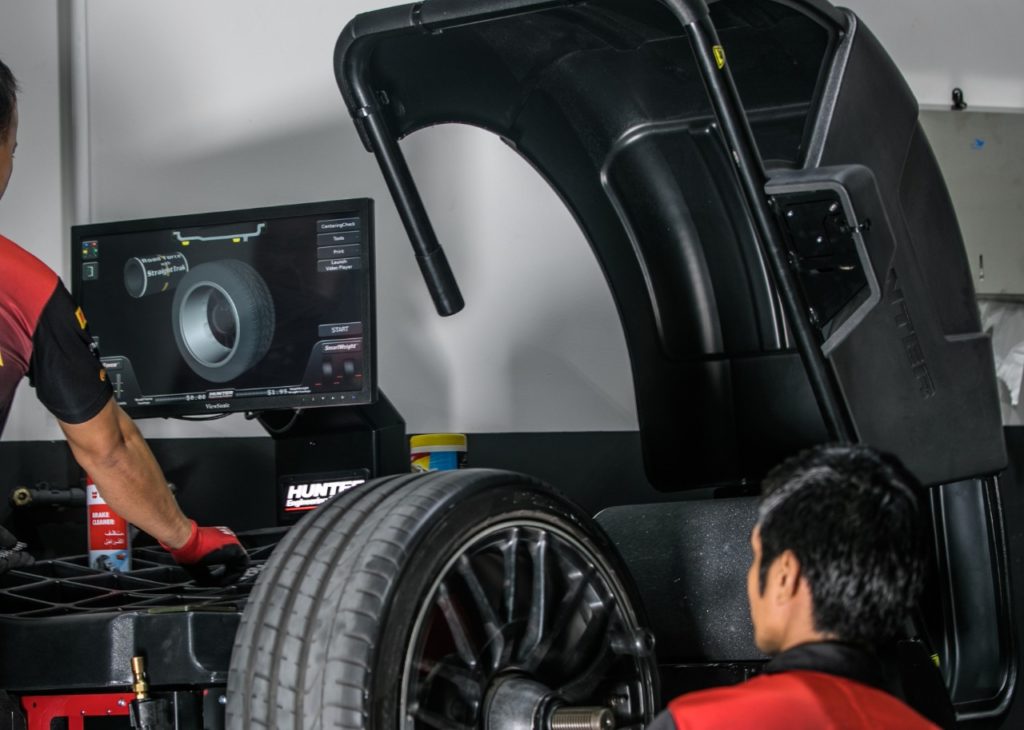Width
Current Selection:
Make
Current Selection:

The Difference Between Wheel Alignment And Wheel Balancing
Wheel alignment and wheel balancing are the two most important factors for a smooth ride. They can extend the service life of your tyres and are often seen as the true game changer when it comes to the quality of your ride.
As you already know by know, wheels make the first and only contact of the vehicle with the road. Hence, they are of paramount importance and must be perfectly aligned and balanced in a perpendicular way to the ground.
While wheel balancing refers to the actual wheel weights and how are they positioned to counter-balance heavy spots, wheel alignment is a factor that ensures a smooth and even ride. Below, we are sharing the main differences between these two and talking about them in detail.
Wheel Alignment: Preventing An Uneven Or Drifting Rides
Wheel alignment refers to how aligned are the wheels of the car. If the vehicle is out of alignment, it will show immediate signs of uneven or rapid tyre wear. It may also drift away from a straight line, pull or wander on a straight and level road. If you have noticed your car going left and right on straight and smooth surfaces, chances are that its wheels are not properly aligned.
In detail, wheel alignment is used to correct the three main types of angles, including:
- Camber – The angle of your wheel which can be viewed from the front of the vehicle
- Caster – The angle of the steering pivot which can be viewed from the side of your vehicle
- Toe – The direction in which the tyres point (relative to each other)
So, how do vehicle tyres get properly aligned?
Often referred to as “front end alignment” or just “tyre alignment,” wheel alignment is a service during which the technician adjusts the angle of your car’s wheels to the specific position as per the manufacturer’s recommended specification. The alignment service will also include a tyre tread check for any signs of poor alignment and further inspection of all the angles as the three main components for measuring wheel orientation.
After this evaluation, all of the necessary adjustments will be made and the service will be complete. In general, most manufacturers recommend doing wheel alignment at your official service every 10,000 kilometers. You should also check if you notice the vehicle pulling to one side which is a direct sign that you need to align your wheels.

Wheel Balancing: Making Sure There Is No Bouncing
Every vehicle’s wheels lose balance over time. In most of the cases, this is due to imperfections, blemishes in their rubber and/or damage to a tyre or rim. All of this causes the tyre to wobble or even jump as it rolls down the road. This bouncing can sometimes be heard and felt in the steering wheel.
The best way to make sure that your wheels are balanced is through the wheel balancing service. Generally speaking, it is the tread wear which causes the distribution of weight around the tyre to change. This can lead to an imbalance which causes the vehicle to shake or vibrate.
A wheel balancing service involves the technician using a calibrated spin balancer and testing both the static (not moving) and dynamic (moving) wheel balance. tyre balancing is typically performed when the tyres are rotated on the vehicle which is on every 5,000 to 10,000 kilometres or 6 months.
Comparison Between Wheel Alignment And Wheel Balancing
If we do a comparison between wheel balancing and alignment, we can see that wheel balancing provides a smoother ride by minimizing the actual tyre bounce from the car. This helps to improve traction and steering control as well as extend your tyre life. Wheels which are out of balance tend to develop a cupped wear pattern and may be dangerous on the open road.
Regular wheel alignment, on the other hand, is known to adjust the wheel angles so they are perpendicular to the ground as well as parallel to each other. In a similar way to balancing, wheel alignment maximizes tyre life and enables a vehicle to track in a straight manner. A car which is out of alignment will pull or drift away from a straight line.
Also, wheel balancing should be performed more frequently. When a new tyre gets fitted to a wheel, it must be rebalanced. Wheel alignment is a service which adjusts the angles of the wheels to the right positions (as per the manufacturer specification) and ensures smooth rides without any bouncing or uneven angles.

How To Know If Your Car Is In Need Of Wheel Balancing Or Alignment?
In the end, wheel alignment and balancing are both important for your vehicle and its tyres. They can ensure a safe and efficient operation, including requirements for control in difficult roads, weather and driving conditions as well as to ensure that you benefit the most and get the biggest lifespan and use of your tyres.
The best way to make sure that your car’s wheels are properly aligned and balanced is to do regular services. If you haven’t done this so far, we would like to invite you to visit our tyre fitting service in Dubai for the best auto repair and maintenance.
We specialize in complete wheel alignment and balancing services for domestic and foreign vehicles and have been serving the UAE market for many years.
So, are you ready to say goodbye to the bouncing and drifting away – and choose the best tyre alignment and balancing service in UAE?




The information below is required for social login